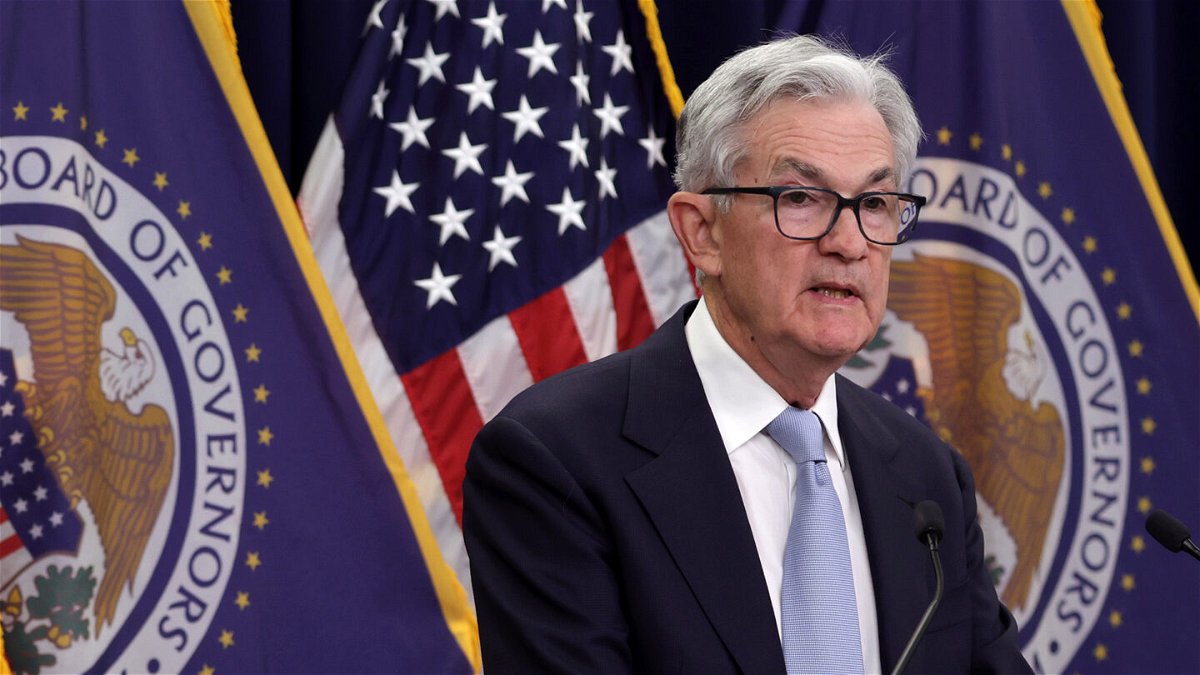Read this to understand what Fed Chair Powell said today

Federal Reserve Board Chairman Jerome Powell holds a news conference following a Federal Open Market Committee meeting at the Federal Reserve on March 22 in Washington
By Elisabeth Buchwald, CNN
When Federal Reserve Chair Jerome Powell talks, markets listen. But you may not.
But what Powell says matters a lot. He (and other members of the Fed) have power over your bank account, employment situation and more.
*Enter CNN’s economy explainer reporter*
Powell’s press conference Wednesday was filled with phrases the average reader could benefit from understanding. But since this information isn’t, ahem, the most user-friendly, CNN took the liberty of explaining what it actually means and why it matters.
A bit of context is key.
Recap: What’s been happening at the Fed
Since last March, the Fed hiked interest rates ten times (the tenth happened today).
When the central bank raises rates, it effectively makes it more expensive for banks to borrow money. Because of that, lenders have to charge higher interest rates on credit cards, mortgages and loans.
The Fed does this because it wants Americans to spend less money. And when it’s more expensive to borrow money, Americans tend to spend less. Think of it this way: If the price of hot dogs goes up, are you going to buy more or fewer? It’s essentially the same deal with interest rates.
The Fed’s rate hiking campaign caused mortgage rates to double, reaching a high of over 7% in November. That caused a lot of prospective homebuyers to push off buying a home, sending home prices lower.
And that’s the key point there: The Fed’s ultimate goal is to get prices lower.
The Fed gets a B+ on that so far.
Prices are up 5% compared to last year. But to the Fed’s credit, that’s much better than last year when prices were 8.3% higher than a year prior.
The Fed is at a pivotal point.
The Fed wants people to spend less money. The problem with that is when people spend less, businesses earn less. When businesses earn less, they can’t afford to pay as many workers. That’s part of the reason why tech companies had to lay off so many workers over the past year.
If the Fed keeps hiking rates, people will probably continue to spend less. But that’s because many people could become unemployed as a result. But if it stops hiking rates, it could lose its grip on inflation.
The general read on today’s developments is the Fed will hit the pause button when it meets again next month.
‘Sufficiently restrictive’
The Fed’s been using the phrase “sufficiently restrictive” in its policy statements for the past six months. But today’s statement did away with it. That minor change matters a lot.
But Powell still used the phrase when he spoke to reporters after the rate hike decision was announced. He said, “Since early last year, we’ve raised interest rates by a total of 5 percentage points in order to obtain a stance of monetary policy that is sufficiently restrictive to return inflation to 2% over time.”
Sufficiently restrictive is another way of saying we want people to spend less money to help bring prices down. The Fed doesn’t want to restrict spending so much that it causes a recession. So the fact that the phrase wasn’t included in today’s statement is a sign that perhaps the Fed thinks it’s no longer appropriate to keep restricting spending by raising interest rates.
‘Credit tightening’
The new(ish) buzzword at the Fed is credit tightening.
Powell told reporters “a particular focus for us going now over the past six, seven weeks now and going forward is going to be what’s happening with credit tightening.”
When times are good in the economy, banks and other lenders tend to have a lot of money to lend. And in case you didn’t realize, banks are in the business of making money off of loans. So if they can lend to more people who they believe will pay them back on time, they’ll make more money.
But right now it’s costing banks more to get the funds they need to make loans. Part of that goes back to the Fed’s interest rate hikes. But the other part comes from the recent bank failures. Since many depositors withdrew money from mid-size and regional banks, these banks have less money to lend.
That’s going to make them more selective about who they loan money to. So for instance, they may only lend to people with a credit score in the very good to excellent range only. Whereas before they may have considered lending to people with lower scores.
All that is to say it’s going to be a lot tougher for a lot of people to get loans, mortgages, new credit cards and more.
‘Softening of labor market conditions’
That’s the Fed’s euphemism for saying more people are getting laid off from their jobs or employers aren’t hiring as many workers.
As harsh as it sounds, the Fed wants there to be fewer jobs to fill.
After the economy began to recover from the pandemic, there’s been too many job openings and not enough people filling them. To attract more workers, employers had to raise wages. When employers raised wages, people had more money to spend. And when people have more money to spend, businesses can charge more money for goods and services (i.e. higher inflation).
The Fed’s wish is starting to come true. The latest Job Openings and Labor Turnover report showed job openings hit their lowest level in two years.
The-CNN-Wire
™ & © 2023 Cable News Network, Inc., a Warner Bros. Discovery Company. All rights reserved.

